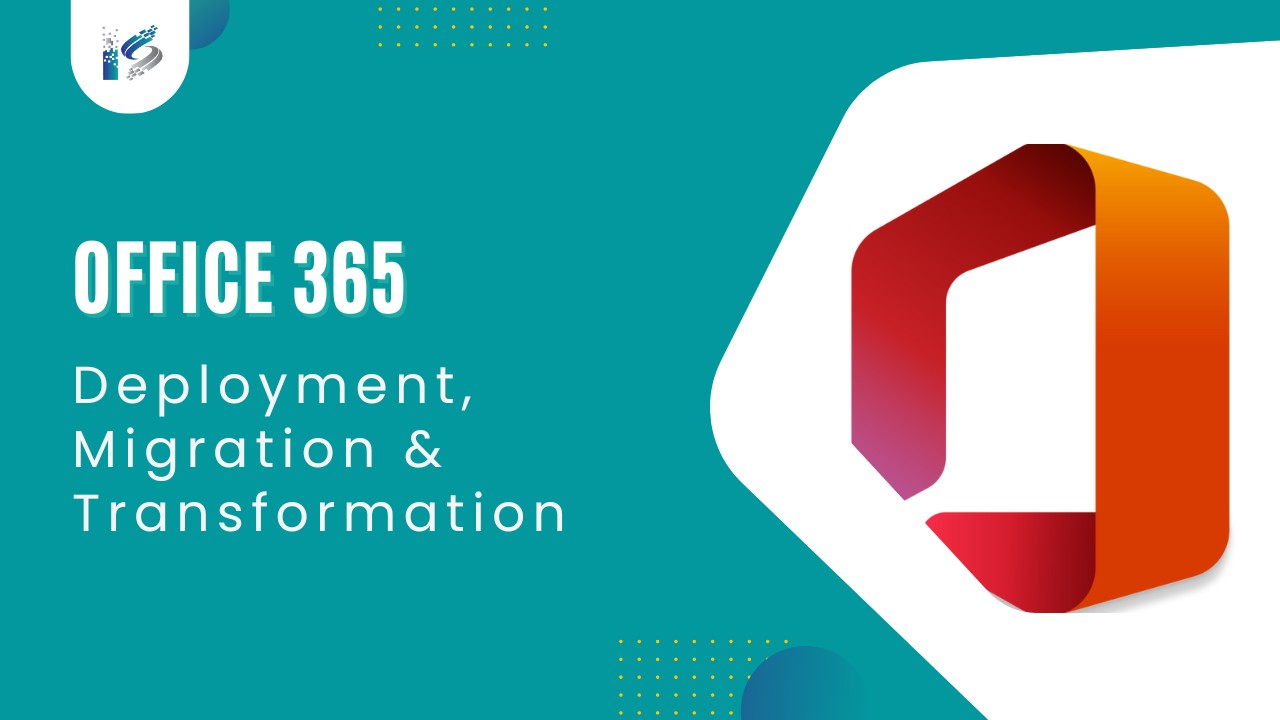In this digital age, businesses are constantly seeking ways to improve collaboration, productivity, and efficiency. Office 365 has emerged as a powerful solution, offering a suite of cloud-based applications and services that enhance teamwork and enable remote work. This article will delve into the various aspects of Office 365 deployment, migration, and transformation, providing insights and guidance for organizations considering or undergoing this transition.
What is Office 365?
Office 365 is a subscription-based productivity platform provided by Microsoft. It offers a comprehensive range of tools and services, including popular applications like Word, Excel, PowerPoint, and Outlook, along with cloud storage, communication tools, and collaboration features. With Office 365, businesses can access their files and work from anywhere, on any device, with real-time collaboration capabilities.
Benefits of Office 365
Before diving into the deployment and migration process, it’s crucial to understand the benefits that Office 365 brings to organizations. Firstly, Office 365 eliminates the need for maintaining on-premises servers, reducing hardware and maintenance costs. Secondly, it provides automatic software updates, ensuring users always have access to the latest features and security patches. Additionally, Office 365 promotes seamless collaboration, enabling employees to work together on documents simultaneously, even when located in different parts of the world.

Planning for Deployment
Deploying Office 365 requires careful planning to ensure a smooth transition. Organizations should assess their current IT infrastructure, understand user requirements, and define project goals. This involves identifying which Office 365 features align with specific business needs and developing a deployment roadmap that outlines the migration strategy and timeline.
Migration Strategies
When it comes to migrating to Office 365, several strategies can be employed, depending on the organization’s size, complexity, and existing infrastructure. The most common migration approaches include cutover migration, staged migration, and hybrid migration. Each strategy has its own merits and considerations, and it’s essential to select the one that best suits the organization’s requirements.
Preparing for Migration
Before initiating the migration process, certain preparatory steps need to be taken. These include assessing the existing email and data systems, ensuring compatibility with Office 365, and performing necessary upgrades or remediation. It is crucial to communicate the upcoming changes to employees and provide training resources to facilitate a smooth transition.
Executing the Migration
The migration itself involves transferring existing email, files, and data to Office 365. Depending on the chosen migration strategy, this process can be executed gradually or all at once. It’s important to carefully plan and test the migration process, ensuring data integrity and minimal disruption to business operations.
Post-Migration Tasks
Once the migration is complete, there are several post-migration tasks to consider. This includes configuring Office 365 settings, setting up security measures, and providing users with necessary training and support. It’s also essential to monitor the new environment to ensure everything is functioning as expected and address any issues promptly.
Training and Adoption
To maximize the benefits of Office 365, organizations must invest in user training and adoption programs. Employees should be educated on the new features and functionalities available to them and encouraged to embrace the collaborative tools offered by Office 365. Training sessions, workshops, and ongoing support can significantly increase user adoption and productivity.
Monitoring and Support
Continuous monitoring and support are critical for a successful Office 365 deployment. This involves proactively monitoring system performance, security, and compliance, and promptly addressing any technical or user-related issues. Regular updates and patches provided by Microsoft should be implemented to ensure the environment remains secure and up to date.
Best Practices
Throughout the deployment, migration, and transformation process, there are certain best practices to follow. These include conducting thorough testing before implementing changes, involving stakeholders and end-users in the decision-making process, and keeping documentation and communication channels updated. Following best practices helps mitigate risks and ensures a successful Office 365 implementation.
Challenges and Solutions
While Office 365 offers numerous benefits, it’s essential to acknowledge and address the potential challenges that organizations may encounter during deployment and migration. Common challenges include data security concerns, compatibility issues, and resistance to change. However, by partnering with experienced consultants, implementing robust security measures, and providing comprehensive training and support, these challenges can be overcome.
Need help on maintaining Azure Security Center Secure Score of Clients?
Our experts can help you on all kinds of works on Azure Security Center.
Conclusion
Office 365 deployment, migration, and transformation present organizations with an opportunity to revolutionize their work environments, enhance collaboration, and improve productivity. By following a well-planned deployment strategy, selecting the appropriate migration approach, and investing in training and support, businesses can harness the full potential of Office 365. With careful planning, effective execution, and ongoing monitoring, organizations can embrace the benefits of a cloud-based productivity platform and achieve digital transformation.








